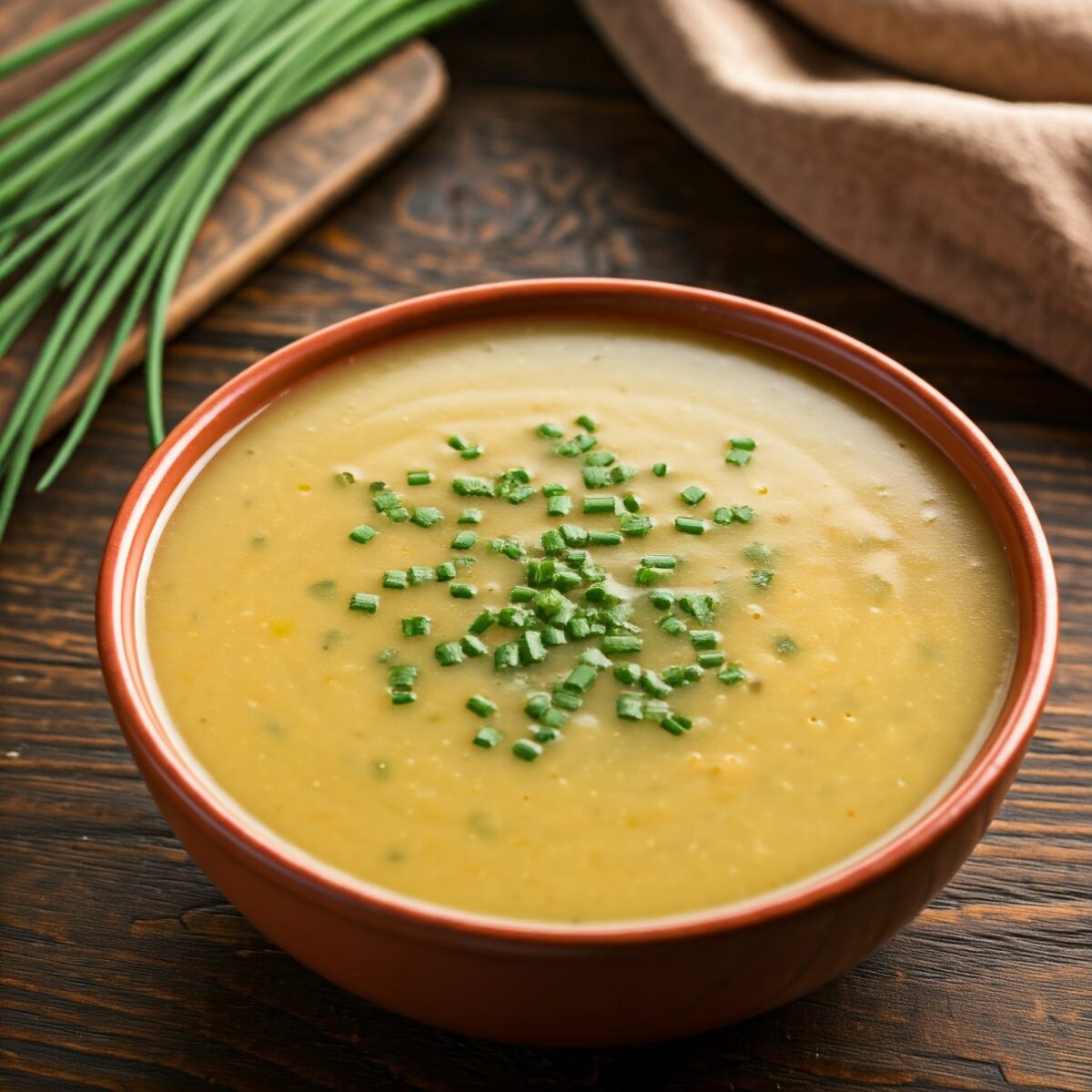1. Introduction to Penicillin Soup
Penicillin soup is a novel culinary trend that has recently garnered attention for its purported health benefits. Originally derived from the discovery of the antibiotic substance penicillin, this soup combines various ingredients known to enhance the immune system and promote overall wellness. The name “penicillin soup” is somewhat of a misnomer; it refers to innovative recipes that incorporate medicinal herbs, spices, and nutrient-dense vegetables, all simmered together to create a nourishing broth. As a part of a balanced diet, penicillin soup can provide an array of vitamins and minerals essential for maintaining good health.
The components of penicillin soup are carefully selected for their therapeutic properties. Commonly featured ingredients include garlic, ginger, turmeric, and leafy greens, each known for their anti-inflammatory and antioxidant properties. Combining these elements creates a hearty and nutritious dish that may bolster one’s overall health. The rise in popularity of penicillin soup can be attributed to a growing consumer interest in wellness-focused diets, which emphasize natural ingredients and holistic health approaches. As more individuals seek to improve their well-being through dietary choices, this soup emerges as an appealing option.
A myriad of factors contributes to the emergence of penicillin soup in gastronomic circles. Firstly, the increasing awareness of the importance of nutrition in disease prevention has propelled many to explore foods that not only taste good but also offer significant health benefits. Furthermore, the culinary community has embraced the idea of experimenting with traditional soup recipes to incorporate functional foods that promote vitality and longevity. As a result, penicillin soup has made its way into various dining establishments and homes, sparking a vibrant discourse around wellness trends and the pivotal role of food in everyday health.
2. The Health Benefits of Penicillin
Penicillin, a well-known antibiotic, has gained attention not only for its medicinal properties but also for its role in the emerging wellness trend surrounding penicillin soup. This unique culinary creation is said to harness the antibacterial effects of penicillin, potentially offering a myriad of health benefits when consumed regularly as part of a balanced diet. One of the most notable advantages of penicillin soup is its ability to combat bacterial infections, providing a natural alternative to conventional antibacterial treatments.

In addition to its antibacterial properties, penicillin soup is believed to have significant immune-boosting effects. The nutrients found in the broth, combined with the inherent qualities of penicillin, may enhance the body’s immune response. This boost in immunity is vital, especially during cold and flu seasons when the body requires extra support to fend off pathogens. Furthermore, incorporating penicillin soup into a balanced diet may contribute to better overall health by ensuring the intake of essential vitamins and minerals that promote bodily function.
Moreover, the consumption of penicillin soup may inadvertently lead to better digestion, as warm broths are generally easy on the stomach. An improved digestive system is crucial for nutrient absorption, ensuring that the body receives all the necessary elements from food. The soothing properties of broth-based soups can also provide comfort and hydration, which are essential for maintaining energy levels and optimal functioning.
Overall, adding penicillin soup to one’s diet may offer multiple benefits that align with a holistic approach to health and wellness. Its antibacterial and immune-boosting properties, along with the potential for aiding digestion, make it a noteworthy addition to a balanced diet. By understanding and embracing these health benefits, individuals may enhance their wellness journey and improve their overall quality of life.
Understanding the Nutritional Value of Penicillin Soup
Penicillin soup, a novel culinary delight, has emerged as a beacon of wellness in contemporary diets. This unique soup is not only rich in flavor but also packed with essential nutrients that contribute to a balanced diet. By incorporating various vegetables, herbs, and spices, penicillin soup serves as a powerhouse of vitamins and minerals. The key ingredients often include those known for their health benefits, such as garlic, onions, and carrots, which provide an array of antioxidants. Each component plays a significant role in promoting overall health, enhancing immune function, and reducing inflammation.
The Role of Gut Health
One of the most remarkable aspects of penicillin soup lies in its profound impact on gut health. The combination of probiotic-rich ingredients, such as fermented vegetables or miso, helps to cultivate a healthy microbiome. A well-functioning gut is pivotal for absorbing nutrients and maintaining digestive health. Furthermore, the fiber content from vegetables aids in digestion, ensuring that the body processes food efficiently. This equilibrium within the gut not only boosts immunity but also contributes to mental clarity and emotional well-being.
Boosting Physical Well-Being
Consuming penicillin soup regularly can yield numerous health benefits, reinforcing its place in a wellness-focused lifestyle. Notably, its hydrating qualities and nutrient density can support weight management and energy levels. As a low-calorie option, it can satisfy hunger without compromising nutritional needs, making it an ideal component of a balanced diet. The health benefits extend beyond mere sustenance; they encompass revitalization and rejuvenation of the body, enabling individuals to lead more active and healthier lives. By embracing this innovative addition to the diet, one may find a significant improvement in their physical well-being, demonstrating the remarkable efficacy of penicillin soup as a holistic health remedy.
3. Exploring the History of Penicillin in Soups
The utilization of penicillin in culinary practices, particularly in soups, has a rich historical context that speaks to both medicinal and cultural dimensions. Initially discovered by Alexander Fleming in 1928, penicillin revolutionized medicine, significantly reducing mortality rates from bacterial infections. The application of this groundbreaking antibiotic extended beyond hospitals and pharmacies into the home, where the need for effective remedies led to experimental culinary practices. Its inclusion in soups can be traced back to traditional beliefs around nourishment and healing.
Across various cultures, soups have long been regarded as comfort food, often serving as a base for medicinal ingredients. The marriage of penicillin and broth showcases an innovative approach to health, infusing meals with both nutritional value and therapeutic properties. This practice gained popularity during times of illness, where a bowl of soup was often paired with the expectation of recovery. The soothing qualities of hot soup combined with the health benefits associated with penicillin made it a preferred dish in many households seeking wellness.

In addition to its health implications, the symbolism of penicillin soup is multifaceted. It represents resilience through adversity, particularly during periods of health crises or epidemics. Within family traditions, recipes passed down through generations often incorporated healthful elements, demonstrating a belief in food not only as sustenance but also as a means to promote well-being. Ultimately, the integration of penicillin into soups embodies a historical narrative of healing, cultural significance, and a sustained emphasis on the importance of a balanced diet in maintaining health. By recognizing this historical backdrop, contemporary society can better appreciate the role of enhanced nutrition in fostering wellness.
4. Recipes and Variations of Penicillin Soup
Penicillin soup has recently emerged as a popular dish due to its reputed health benefits and the comfort it provides. To create this nourishing soup, a basic recipe can serve as a foundation, which can then be adapted with various ingredients to suit individual tastes and dietary needs. The following outlines a simple yet delicious penicillin soup recipe, alongside some creative variations.
The basic penicillin soup can be prepared as follows:
- 1 tablespoon olive oil
- 1 large onion, chopped
- 2 carrots, diced
- 2 cloves of garlic, minced
- 4 cups chicken or vegetable stock
- 1 cup cooked chicken or beans for protein
- 1 cup of diced potatoes
- 2 cups of leafy greens (such as spinach or kale)
- Salt and pepper to taste
Begin by heating the olive oil in a large pot over medium heat. Sauté the onion, carrots, and garlic until softened. Next, add the stock, protein of choice, and potatoes. Bring to a boil, then reduce to simmer for about 20 minutes. Finally, incorporate the leafy greens and cook for another 5 minutes. Season with salt and pepper.
To enhance the flavor profile, consider some unique variations. For a spicy twist, add diced jalapeños or chili flakes to the base recipe. Alternatively, introduce Asian flavours with the addition of ginger, soy sauce, and mushrooms, creating a fusion of tastes. For a creamier texture, blend a portion of the soup and return it to the pot, mixing in coconut milk or a dollop of yogurt just before serving.
Incorporating ingredients like quinoa, lentils, or chickpeas not only diversifies the texture but also enriches the dish with additional protein and fiber, adhering to the principles of a balanced diet. Each variation of penicillin soup offers both comfort and a range of health benefits, making it a versatile choice for any meal plan.
5. Incorporating Penicillin Soup into a Balanced Diet
As dietary trends evolve, health-conscious individuals are increasingly seeking ways to enhance their nutritional intake. Penicillin soup has emerged as a significant player in this landscape, providing a unique source of health benefits that can complement a balanced diet. It is crucial, however, to integrate this dish thoughtfully with other nutrient sources to achieve optimal wellness.
To effectively incorporate penicillin soup into a well-rounded dietary regimen, consider how it can be paired with various food groups. Vegetables, for instance, serve as an excellent accompaniment, adding essential vitamins and minerals. Incorporating leafy greens, such as spinach or kale, can enrich the soup, increasing its nutritional value. Additionally, proteins such as lean meat, poultry, or legumes can be included to create a more comprehensive meal, offering vital amino acids that support muscle function and overall health.
Whole grains are another beneficial component that can be served alongside penicillin soup. Options like brown rice, quinoa, or whole wheat bread provide fiber and energy, helping to maintain a balanced diet. Including healthy fats, such as avocado or olive oil, also complements the soup by aiding in the absorption of fat-soluble vitamins, thereby enhancing its health benefits.
Serving suggestions can vary, but a thoughtful combination of flavors can create a delightful dining experience. For instance, garnishing penicillin soup with fresh herbs like parsley or cilantro can elevate its taste while adding nutritional richness. Additionally, consider a side salad filled with colorful vegetables to ensure a diverse array of nutrients, further promoting a balanced dietary approach.
Ultimately, by incorporating penicillin soup into a varied diet, individuals can enjoy its unique health benefits while ensuring that their nutritional intake remains diverse and balanced. Properly incorporating this wellness trend into meals sets the stage for a healthier lifestyle.
6.Conclusion: The Future of Penicillin Soup as a Wellness Trend
As we look ahead, it is clear that penicillin soup is poised to play an increasingly significant role in modern wellness practices. With the growing emphasis on holistic health and balanced diets, the nutritional benefits offered by penicillin soup are likely to attract more attention. The inherent health benefits associated with its components, particularly in terms of boosting immune responses and promoting overall well-being, make it an appealing option for individuals seeking to enhance their nutrition.
Recent research supports the idea that integrating penicillin soup into a regular diet can be beneficial, not only for illness recovery but also as a preventive measure. Its versatility allows for diverse culinary adaptations that can cater to various palates, which means it can easily be incorporated into daily meals. This adaptability contributes to the likelihood of penicillin soup becoming a staple in health-focused menus, further solidifying its place in contemporary dietary practices.
Moreover, with growing interest in functional foods and the microbiome’s influence on health, potential innovations may arise surrounding this wellness trend. Future developments could include improvements in formulations that maximize nutrient absorption or the introduction of new flavors and ingredients that complement the soup’s distinct characteristics. As healthcare professionals continue to endorse a balanced diet enriched with immune-boosting properties, penicillin soup aligns perfectly with these goals.
In conclusion, the trajectory of penicillin soup as a wellness trend suggests a bright future. With continued research and refinement in preparation techniques, it could transform into a mainstream dietary component. Embracing this trend may not only enhance individual health outcomes but also encourage a broader acceptance of innovative food practices that prioritize vitality and well-being.
Frequently Asked Questions about Penicillin Soup
As the trend of penicillin soup gains momentum, many individuals have inquiries regarding its safety, preparation, and health implications. One of the primary concerns is whether penicillin soup is safe for various populations. Generally, penicillin soup is intended for individuals who do not have a known allergy to penicillin. However, those with compromised immune systems or specific health conditions should consult a healthcare professional before incorporating it into their balanced diet.
Another common question pertains to the homemade preparation of penicillin soup. It is indeed possible to create this wellness dish at home. Recipes typically involve boiling a suitable broth with ingredients rich in nutrients, such as garlic, onions, and medicinal fungi, which may potentially promote health benefits. While preparing penicillin soup, it is crucial to use fresh and quality ingredients to maximize its positive effects and ensure food safety.
Potential side effects are also a concern among many people exploring its benefits. Though penicillin soup boasts a variety of nutrients that can contribute to a healthy diet, those with allergies to penicillin or certain funguses should exercise caution. Some may experience mild gastrointestinal disturbances when trying new foods. Monitoring one’s body’s response to penicillin soup is essential to avoid adverse effects while reaping its nutritional values.
Finally, the frequency of including penicillin soup in one’s diet remains a common inquiry. For optimal health benefits, integrating this soup into a balanced diet a few times a week might be advisable. Consuming it regularly can support overall wellness while ensuring variety and diversity in one’s dietary choices, thus enhancing overall nutrition. The key is to maintain balance, allowing room for other nutrient-rich foods in conjunction with penicillin soup.



